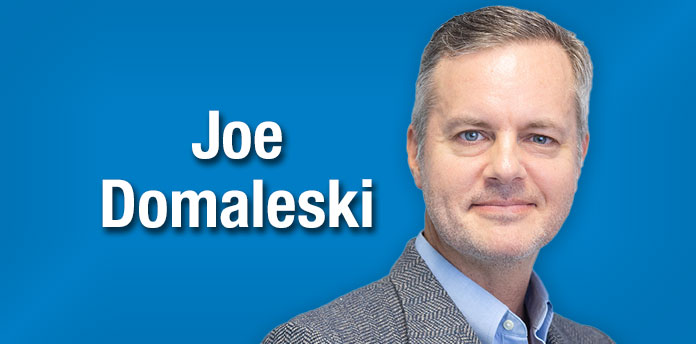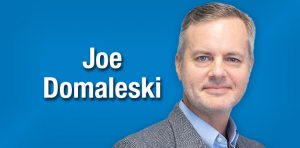The struggle is real, especially during this holiday season. How do I provide effective leadership by finding the balance between what I’m thinking (head), what I’m feeling (heart), and what I’m actually doing (hands)? Let’s explore each of those three concepts in more detail.
Using your head is what most people traditionally think about when it comes to leadership. The ability to process information, think critically, and make good decisions is a foundational skill set for any leader. For me personally, this not only applies to how I run my own business, but how I advise clients. Indeed, as a service business, my company is paid for our expertise and creativity. It may sound easy, but it’s not. Information is not always clear. Oftentimes various pieces of information conflict with each other. Clients can give us the wrong information and then change their minds later. Right now, our best and brightest economists aren’t quite sure if we’re in a recession or not because the data is conflicting. Sometimes the information comes in late or not at all. This happens quite often and I’ve found myself having to be “directionally correct” to get things started as information comes in later. If you wait until you have everything you need, it’s possible you’ll never even get started.
Even if you have good information, it’s not always clear what to do with it. We have more options at our disposal than any other generation before us. Sometimes that’s a good thing, but many times it’s overwhelming and can lead to paralysis by analysis. Finding just enough data to make a good decision without getting bogged down in minutiae is a balancing act. Many organizations pride themselves on being data-driven. Data is a great way to model the world around us. I have a math degree and love numbers. Having good data and information is essential for running a profitable business. Taken to an extreme, running an organization purely by numbers removes the human element and that’s not always good. During the last recession of 2009-2011, I was advised to shut down my business based on the numbers. I adopted Admiral Farragut’s advice from 150 years ago, “Damn the torpedoes, full speed ahead.” I’m glad I did.
Using your heart as a basis for leadership has become quite popular over the last twenty-five years and for good reason. Passion from the heart inspires great actions that can exceed the limits of what a business model might predict. Noted leadership expert John Maxwell has said that “Leadership is influence, nothing more nothing less.” I agree with that statement. The most admired leaders are mostly remembered for their passion and heart, not their ability to read financial reports. Most customers are interested in more than just the lowest price, they want to spend their money with organizations that match their values. Employees are the same way. Salary is important but work environment and “good vibes” are just as important. It’s the job of the leader to inspire customers and employees with heart-centered leadership.
Good intentions and a pure heart alone are not enough to run an organization. Passion and purpose can jumpstart a project or initiative, but it still takes a good business mind to make it all work. Over my business career, I’ve struggled with finding the proper balance between heart and mind. I think most leaders have the same struggle. Emotions sometimes get in the way of making tough business decisions that need to be made based on the numbers. Yet, some people can be quite ruthless when it comes to being single-mindedly focused on numbers. More often than not, those same people don’t really understand the numbers – but that’s a story for a future column. It takes a heart and a mind to be a leader, but that’s not all.
Using your hands means leading by example. Having a pure heart and focused mind is not enough for leadership. For most people, seeing is believing. A leader must be willing to roll up their sleeves and do the work in order to inspire people. When I started the business as a solo entrepreneur that literally meant working in the business during the day and working on the business at night. As the business grew and we hired employees, that meant I had to find a balance between delegation and stepping in. A leader has to show customers they are willing to step in and make things right when things aren’t going well. An employee has to know the leader “has their back” and will support them in the face of adversity. Sometimes people don’t know what to do and the leader has to step in and show people what needs to be done. At other times the leader needs to use discretion and restraint in order to let people make mistakes and learn.
Knowing what needs “hands-on” attention isn’t always clear. As our company has grown, I don’t personally have knowledge of everything that goes on. I did when we had a smaller team, but oftentimes I don’t have direct information which means I need to rely on my team to bring things up that need my attention. Like many leaders, I make mistakes and sometimes insert myself into a situation that’s already going well. Doing so can result in a team member thinking I don’t have confidence in them. Conversely, there are times when I really should have “hands-on” involvement in a situation and I miss the opportunity. We’re all human and make mistakes. Finding the right level of personal involvement in a project, account, or situation can be a challenge. It involves instinct, awareness, and willingness to act.
So let’s put all of this together in the interest of being more effective leaders. Today’s leader needs to find the balance between head, heart, and hands in order to be effective. Some have used the term, “Leadership Trinity” to describe this balance needed for a modern leader. Using your head involves the what, using your heart involves the why, and using your hands involves the how. As we bring the year to a close, I’m going to double down on all three facets of leadership to make next year better. How about you?
[Joe Domaleski, a Fayette County resident for 25 years, is the owner of Country Fried Creative – an award-winning digital marketing agency located in Peachtree City. His company was the Fayette Chamber’s 2021 Small Business of the Year. Joe is a husband, father of three grown children, and proud Army veteran. He has an MBA from Georgia State University and enjoys sharing his perspectives drawing from thirty years of business leadership experience. ]









Leave a Comment
You must be logged in to post a comment.